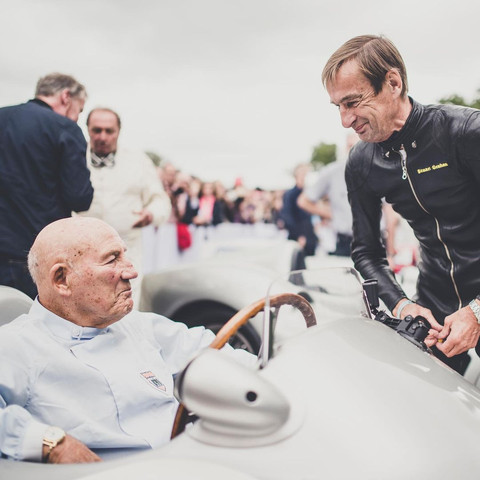Remembering a Giant: Stirling Moss, 1929-2020
- Sean Campbell
- Dec 30, 2020
- 3 min read
Updated: Apr 2, 2021
Reflecting on the life & legacy of one of motor racing’s greatest icons.

Stirling Moss. Credit @f1vintage on Instagram
In April the world bid a sad farewell to Sir Stirling Moss, a giant of the motor racing world and in many peoples’ eyes, the greatest driver never to win a world championship.
That particular blemish on his record is one that always seems to take folks by surprise. After all, few driver’s names are as evocative as that of Moss—all the daring and skill of a fighter pilot, all the brashness of a Hollywood star, and all the honour of the archetypal general.
It’s his honour that seemed to be most commented on when he passed away at the age of 90 in his home in Mayfair, London. A display of noble sportsmanship hindered him from taking home the world title in 1958: Rival driver Mike Hawthorn was on the verge of being disqualified from the Portuguese Grand Prix for pushing his broken down Ferrari in the wrong direction. Moss however, who would go on to win the race, pleaded Hawthorn’s case to avoid any penalty, thus he was allowed to gain six points. Come the end of the racing season at Casablanca, Hawthorn would finish with a single point advantage over Moss. It was Moss’ integrity in Portugal that effectively gifted that world title to Hawthorn.
While such chivalry has propelled Moss to the very heights of motor racing royalty, his greatest achievements were undoubtedly hewn out while behind the wheel.
In 1955, he paired up with the legendary Juan Manuel Fangio to make a Mercedes dream team. That year, Moss became the very first Briton to win the Aintree Grand Prix, though it was his more seasoned team mate Fangio who would take the world championship overall. Also in 1955, he won the fabled Mille Miglia—the 1,000 mile public road dash from Brescia to Rome and back again. The record they set, 10 hours and 7 minutes at an average speed of 97.95mph (167.63kmh), remained unbroken until the race was outlawed two years later. Indeed for this very reason, the record still stands.

Credit @storic_f1 on Instagram
Moss often thrived most while burdened with underdog status. In 1961, three years after that narrow loss to Hawthorn, Moss found himself commandeering a Lotus-Climax around the white-knuckle circuit at Monaco, and later the menacing Nürburgring. Moss’ Lotus-Climax was a class below the competition— particularly the Ferraris driven by Richie Ginther and Wolfgang von Trips. But these tracks demand skill and courage more than raw power and advanced technology, and Moss, the most daring and skilful of them all, saw the chequered flag on those days.
Throughout Moss’ career, one question that long surrounded him revolved around Enzo Ferrari. In 1951, he’d been shunned by the great car maker after making a long trip to Puglia to collect what he thought was to be his new car. Alas, Moss was spurned and the car was given to Piero Taruffi with no explanation. The young Moss left Italy empty handed, red faced and furious. Thus began a fierce rivalry with the Italian manufacturer, resulting in extra satisfaction when he bested them on the track.
However, in 1962, Enzo Ferrari made another approach. After 11 years of rivalry, faux-courtship and spurns from each to the other, it appeared Moss and Ferrari were finally going to unite.
But just like his World Championship, it wasn’t to be. At Goodwood on April 24th, his Lotus inexplicably careered into an earth bank and was catastrophically damaged. After an hour with no sign of life from within the debris, an unconscious Moss was dragged from the wreckage. The damage was blood-chilling—a broken eye socket, cheekbone, arm and leg, as well multiple lacerations to his head and body were the least of the damage. His brain took the brunt of the impact and had been left severely bruised. Moss would spend the next month in a coma, and the next 6 months with half-body paralysis. The British public and racing fans everywhere looked on with baited breath for daily news of Moss, with many expecting him to never recover.
It’s a mark of Moss’ character then, that just one year and one week after his near-death accident, he returned to Goodwood behind the wheel of a Lotus. He drove with exceptional zest, and with a total deficiency of fear, but upon returning to the pit, Moss reflected that the old reflexes were no longer there. He retired soon after with his head held high and his good health intact.
Stirling Moss in his later years. Credit (L-R) Amy Shore, Günter Biener.
That Moss would go on to live a full life for the next half century is testament to his will, his charisma, and his sheer magic.
As for legacy, we need only reflect on his nickname to appreciate his impact on the motoring world:
Rest in Peace, Mr. Motor Racing.





Comments